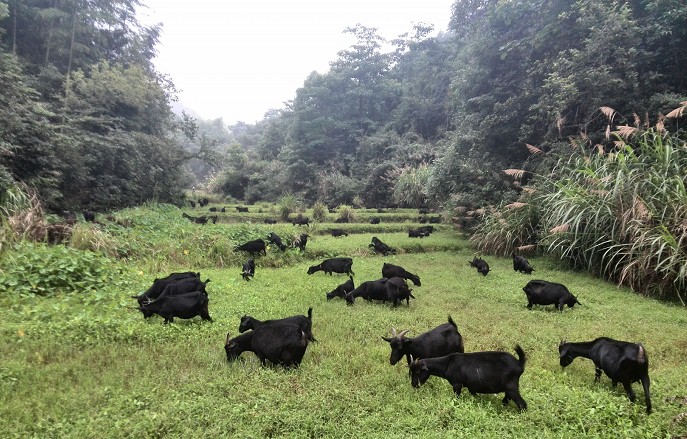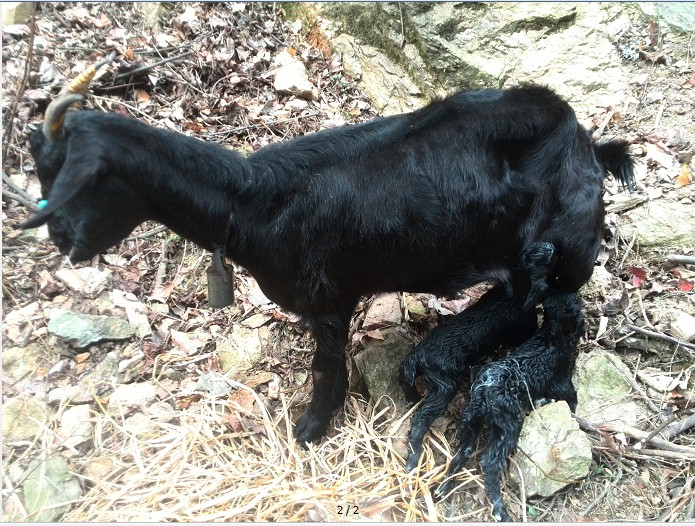Ruminal Bacteria Community Evolves as Rumen Develops, and Rhubarb Could Alter its Composition as a Feed Additive
Ruminants like cattle or sheep can digest forages which can hardly be utilized by the monogastric animals such as pigs or mice. The reason behind is that the rumen (i.e., the first stomach of ruminants) acts as a small but complex ecosystem, and it accommodates various prokaryotic (bacteria and archaea) and eukaryotic (protozoa and fungi) microorganisms which symbiotically convert feed stuffs into microbial biomass and fermentation end products which are essential to the animal. Within this ecosystem, bacteria play a more significant role than other microorganisms and contribute to the production of meat and milk of ruminants.
Given the significance of ruminal bacteria in rumen fermentation and production performance of ruminants, extensive efforts have been taken to explore the relationship between the bacteria colonization and rumen development. Researchers also hope to find a way to shape ruminal bacteria in early life towards an efficient community which can last until the later period and thus benefit the production performance as well as the health welfare of ruminants to a great extent.
Recently, a joint study conducted by the Institute of Subtropical Agriculture, Chinese Academy of Sciences (ISA) and the Lethbridge Research Centre,Agriculture and Agri-Food Canada have illustrated how the ruminal bacteria community changed as the rumen developed (from 1 d to 60 d after birth) in Xiangdong black goats -a local breed of goat in Changsha, and the effect of rhubarb on the bacteria community was also evaluated in this research.
“Compared with the DNA, RNA has a natural advantage in reflecting the most active rumen microorganisms and their metabolic potential.” said WANG Zuo, a doctoral student primarily performing this research. Therefore, the cooperated team employed RNA-based 16S rRNA sequencing to investigate the bacteria population in the rumen of black goats, and they found that the metabolically active bacterial microbiota on four different locations were all dominated by the phyla Proteobacteria, Firmicutes, and Bacteroidetes throughout rumen development. It is indicated by the analysis that age exerted a significant influence on the structure of bacteria community. The relative abundances of different bacteria at both phylum and genera level experienced various fluctuations during rumen development. Moreover, the supplementation of rhubarb root powder to the diets of weaned black goats altered the composition of bacterial microbiota, and this effect was more significant on 50 d compared to that on 60 d.
This study is the first to investigate the initial colonization and the subsequent evolution of the metabolically active bacteria, using RNA isolated across four fractions within the rumen of black goats. It contributes to deepening the understanding of bacterial colonization during rumen development and offering theoretical foundations for the manipulation of rumen microbiome and fermentation in early life.
This study was supported by the grants from the National Natural Science Foundation of China (Grant No. 31320103917, 31561143009), “Strategic Priority Research Program - Climate Change: Carbon Budget and Relevant Issues” (Grant No.XDA05020700), and Hunan Provincial Creation Development Project (Grant No. 2013TF3006). This study was also supported by the Open Foundation of Key Laboratory of Agro-ecological Processes in Subtropical Region, Institute of Subtropical Agriculture, Chinese Academy of Sciences (Grant No. ISA2016301), and the MOE-AAFC PhD Research Program of the China Scholarship Council.
The present research entitled “Changes in metabolically active bacterial community during rumen development, and their alteration by rhubarb root powder revealed by 16S rRNA amplicon sequencing” has been published online by Frontiers in Microbiology. (http://journal.frontiersin.org/article/10.3389/fmicb.2017.00159/abstract)

Figure 1 The grazing herd of Xiangdong black goats on pasture (Imaged by ISA)

Figure 2 The newborn twin goat kids and their dam(Imaged by ISA)
Contact: TAN Zhiliang
E-mail: zltan@isa.ac.cn
Institute of Subtropical Agriculture, Chinese Academy of Sciences
Download attachments: